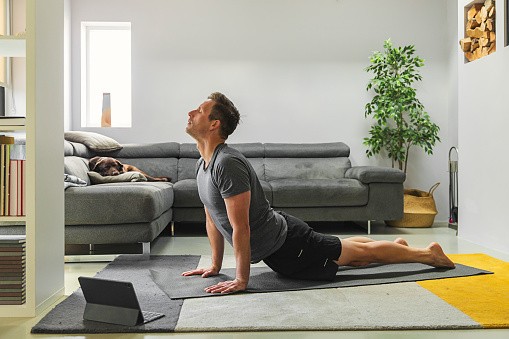People with severe back pain usually go to physical therapy or read a lot of self-care books if the pain may be a result of mental health problems. However, new research reveals that yoga may be the best therapy to treat chronic low back pain (cLBP).
Researchers have also observed that some patients have resorted to pain medication while others feared that exercise would do more harm than good. A study published in Pain Medicine by the Boston Medical Center explains why yoga is the most effective therapy for both body and mind.

Chronic low back pain is the result of various things such as traumatic injuries, sprains, arthritis, being overweight, bad posture, and mental health. It is usually treated with several therapies such as medication, acupuncture, physical therapy, and surgery for severe cases.
At the start of the study, 299 participants took the Roland Morris Disability Questionnaire which measures how the severity of their low-back pain affects functional activities. As a result, 42% responded that yoga helped improve physical function while 34% voted for physical therapy and 11% in favor of self-care.
The researchers highlighted the factor of "fear-avoidance beliefs related to physical activity," and how fear affects patient outcomes. Dr. Eric Roseen, a chiropractor from Boston Medical Center, said, "Adults living with chronic low back pain could benefit from a multi-disciplinary approach to treatment including yoga or physical therapy, especially when they are already using pain medication."
Hatha Yoga for Lower Back Pain
Afterward, the patients with cLBP participated in a yoga intervention consisting of weekly 75-minute sessions of Hatha yoga. The sessions consisted of several poses focusing on the lower back, relaxation, breathing, meditation, and yoga philosophy. In addition to the group sessions, the volunteers were encouraged to spend thirty minutes each day doing yoga.
Hatha yoga focuses on balance, flexibility, and strength while incorporating breathing patterns known as pranayama. This form of yoga also promotes calmness for the entire body as well as the mind and spirit as a result of focusing on breathing and energy flow.
When done consistently. Hatha yoga helps build up the immune system, helps with skin health, and strengthens the core. The spine, hips, abs, and lower back become more flexible and helps people avoid further back and muscle injuries.
Read Also: [COVID-19 Update] Can Yoga and Meditation Help with Coronavirus Treatment?
Other Treatment
In comparison, they also had a physical therapy intervention that had one-on-one hourly appointments for 12 weeks. Physical therapists used the Treatment-Based Classification Method and aerobic exercise.
The third intervention consisted of self-care or reading The Back Pain Handbook. The book contains self-management strategies for dealing with chronic lower back pain such as stretching, physiological factors, and social factors.
Moreover, the participants were mostly low-income and non-white adults who had their education, income, employment, and lifestyle factored into their health conditions.
"Focusing on a diverse population with an average income well below the US median, this research adds important data for an understudied and often underserved population," Roseen said. "Our findings of predictors are consistent with existing research, also showing that lower socioeconomic status, multiple comorbidities, depression, and smoking are all associated with poor response to treatment."
Read Also: Monitoring Personal Health Is Now Made Easier With Pencil and Paper, New Study Suggests












